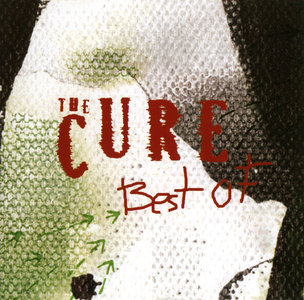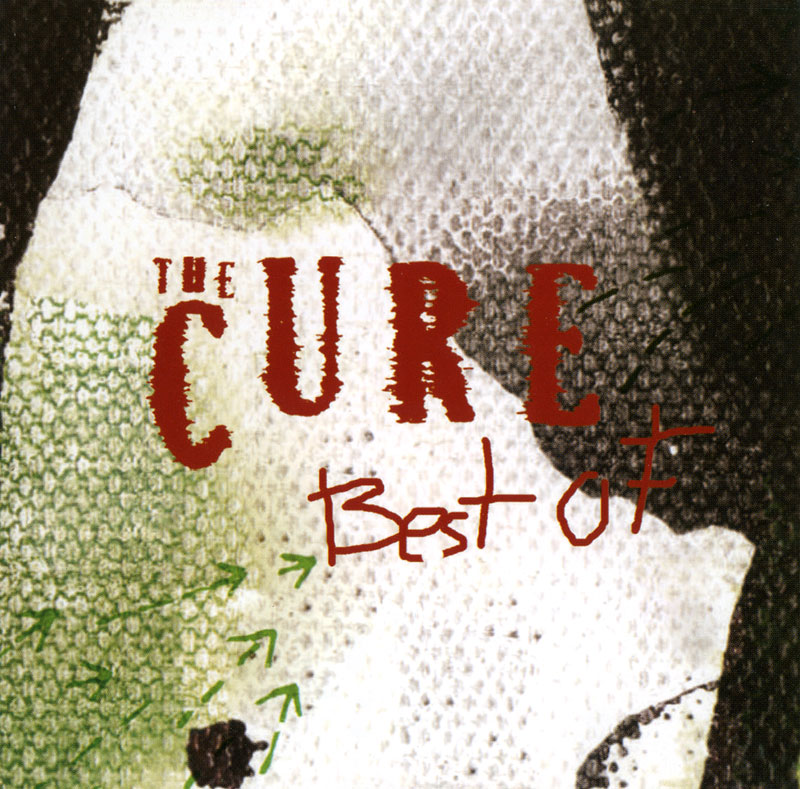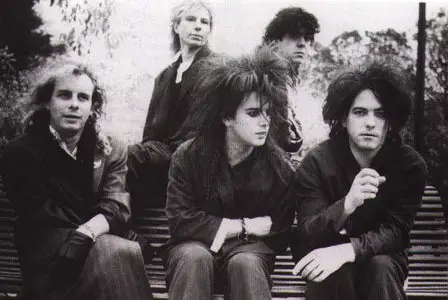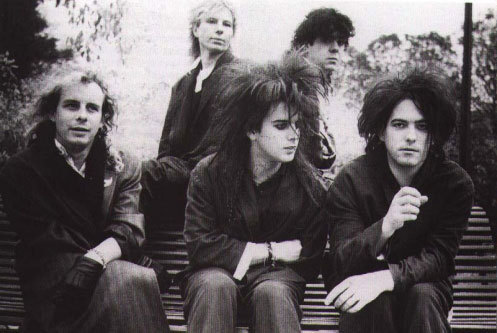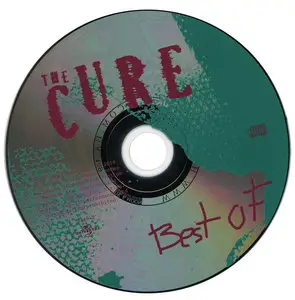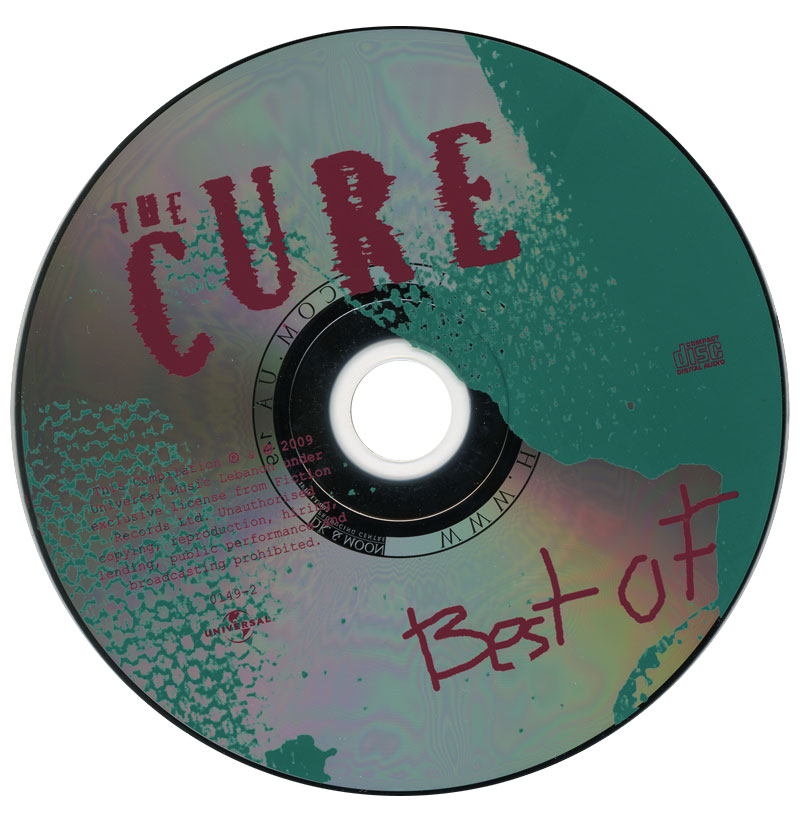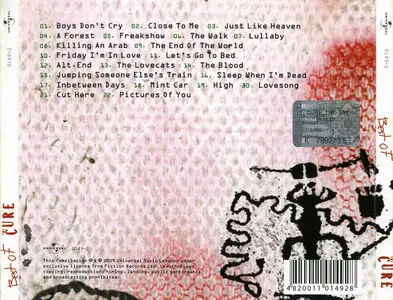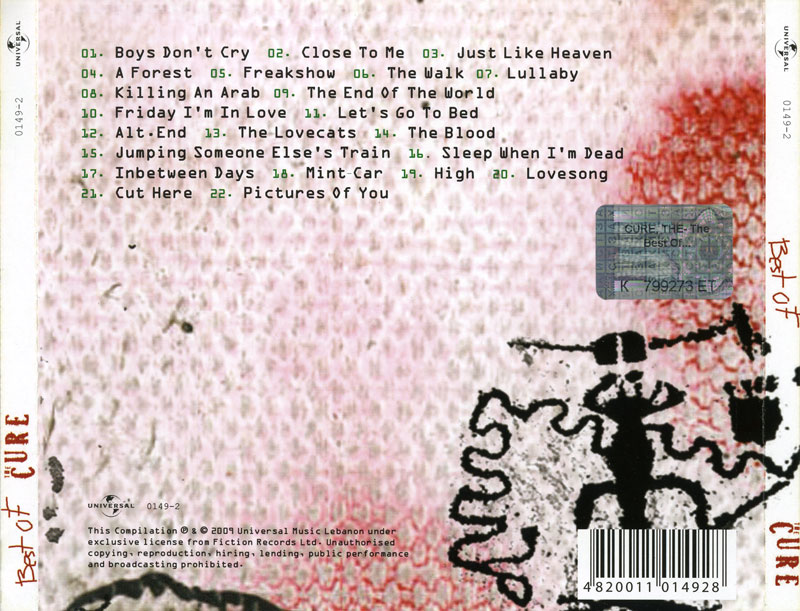Best Of The Cure (2009)
Rock | EAC Rip | Flac(Image) + Cue + Log | MP3 CBR 320Kbps | 22 Tracks
Universal Music lebanon | 0149-2 | ~596 + 206 Mb
Booklet and Covers(300dpi, jpg) Included | Art(png, 600dpi) -> 154 Mb
Rock | EAC Rip | Flac(Image) + Cue + Log | MP3 CBR 320Kbps | 22 Tracks
Universal Music lebanon | 0149-2 | ~596 + 206 Mb
Booklet and Covers(300dpi, jpg) Included | Art(png, 600dpi) -> 154 Mb
"The Best of…" от группы The Cure - это компиляция лучших песен за все 30 лет существования самых своенравных, независимых и не терпящих ограничений британских рокеров. Добившие всемирного признания, подтверждением чего служат суммарные продажи их альбомов - около 30 миллионов копий, музыканты не перестают удивлять своих поклонников и выпускать новые альбомы. отличный подарок для поклонников творчества великой группы!
The Cure Biography:
Formed: 1976, Crawley, England
Genres: Rock
Representative Albums: "Staring at the Sea: The Singles", "Galore: The Singles 1987-1997", "The Head on the Door"
Representative Songs: "Just Like Heaven", "Boys Don't Cry", "Friday I'm in Love"
Out of all the bands that emerged in the immediate aftermath of punk rock in the late '70s, few were as enduring and popular as the Cure. Led through numerous incarnations by guitarist/vocalist Robert Smith (born April 21, 1959), the band became notorious for its slow, gloomy dirges and Smith's ghoulish appearance, a public image that often hid the diversity of the Cure's music. At the outset, the Cure played jagged, edgy pop songs before slowly evolving into a more textured outfit. As one of the bands that laid the seeds for goth rock, the group created towering layers of guitars and synthesizers, but by the time goth caught on in the mid-'80s, the Cure had moved away from the genre. By the end of the '80s, the band had crossed over into the mainstream not only in its native England, but also in the United States and in various parts of Europe. The Cure remained a popular concert draw and reliable record-seller rhroughout the '90s, and their influence could be heard clearly on scores of new bands during the new millenium, including many that had little to do with goth.
Originally called the Easy Cure, the band was formed in 1976 by schoolmates Smith (vocals, guitar), Michael Dempsey (bass), and Laurence "Lol" Tolhurst (drums). Initially, the group specialized in dark, nervy guitar pop with pseudo-literary lyrics, as evidenced by the Albert Camus-inspired "Killing an Arab." A demo tape featuring "Killing an Arab" arrived in the hands of Chris Parry, an A&R representative at Polydor Records; by the time he received the tape, the band's name had been truncated to the Cure. Parry was impressed with the song and arranged for its release on the independent label Small Wonder in December 1978. Early in 1979, Parry left Polydor to form his own record label, Fiction, and the Cure was one of the first bands to sign with the upstart label. "Killing an Arab" was then re-released in February of 1979, and the Cure embarked on its first tour of England.
The Cure's debut album, Three Imaginary Boys, was released in May 1979 to positive reviews in the British music press. Later that year, the group released the non-LP singles "Boys Don't Cry" and "Jumping Someone Else's Train." That same year, the Cure embarked on a major tour with Siouxsie and the Banshees. During the tour, the Banshees' guitarist, John McKay, left the group and Smith stepped in for the missing musician. For the next decade or so, Smith would frequently collaborate with members of the Banshees.
At the end of 1979, the Cure released a single, "I'm a Cult Hero," under the name the Cult Heroes. Following the release of the single, Dempsey left the band to join the Associates; he was replaced by Simon Gallup at the beginning of 1980. At the same time, the Cure added a keyboardist, Mathieu Hartley, and wrapped up production on the band's second album, Seventeen Seconds, which was issued during the spring of 1980. The addition of a keyboardist expanded the group's sound, was which now more experimental and often embraced slow, gloomy dirges. Nevertheless, the band still wrote pop hooks, as demonstrated by the group's first U.K. hit single, "A Forest," which peaked at number 31. After the release of Seventeen Seconds, the Cure launched its first world tour. Following the Australian leg of the tour, Hartley exited the lineup and his former bandmates chose to continue without him, releasing their third album in 1981 (Faith) and watching it peak at number 14 in the charts. Faith also spawned the minor hit single "Primary." The Cure's fourth album, the doom-laden, introspective Pornography, was released soon after in 1982. Pornography expanded their cult audience even further and cracked the U.K. Top Ten. After the Pornography tour was completed, Gallup quit the band and Tolhurst moved from drums to keyboards. At the end of 1982, the Cure released a new single, the dance-tinged "Let's Go to Bed."
Smith devoted most of the beginning of 1983 to Siouxsie and the Banshees, recording the Hyaena album with the group and appearing as the band's guitarist on the album's accompanying tour. That same year, Smith also formed a band with Banshees bassist Steve Severin; after adopting the name The Glove, the group released its only album, Blue Sunshine. By the late summer of 1983, a new version of the Cure – featuring Smith, Tolhurst, drummer Andy Anderson, and bassist Phil Thornalley – had assembled and recorded a new single, a jaunty tune named "The Lovecats." The song was released in the fall of 1983 and became the group's biggest hit to date, peaking at number seven on the U.K. charts. The new lineup of the Cure released The Top in 1984. Despite the pop leanings the number 14 hit "The Caterpillar," The Top was a return to the bleak soundscapes of Pornography. During the world tour supporting The Top, Anderson was fired from the band. In early 1985, following the completion of the tour, Thornalley left the band. The Cure revamped their lineup after his departure, adding drummer Boris Williams and guitarist Porl Thompson; Gallup returned on bass. Later in 1985, the Cure released their sixth album, The Head on the Door. The album was the most concise and pop-oriented record the group had ever released, which helped send it into the U.K. Top Ten and to number 59 in the U.S., the first time the band had broken the American Hot 100. "In Between Days" and "Close to Me" – both pulled from The Head on the Door – became sizable U.K. hits, as well as popular underground and college radio hits in the U.S.
The Cure followed the breakthrough success of The Head on the Door in 1986 with the compilation Standing on a Beach: The Singles. Standing on a Beach reached number four in the U.K., but more importantly it established the band as a major cult act in the U.S.; the album peaked at number 48 and went gold within a year. In short, Standing on a Beach set the stage for 1987's double album Kiss Me, Kiss Me, Kiss Me. The album was eclectic but it was a hit, spawning four hit singles in the U.K. ("Why Can't I Be You," "Catch," "Just Like Heaven," "Hot Hot Hot!!!") and the group's first American Top 40 hit, "Just Like Heaven." Following the supporting tour for Kiss Me, Kiss Me, Kiss Me, the Cure's activity slowed to a halt. Before the Cure began working on their new album in early 1988, the band fired Tolhurst, claiming that relations between him and the rest of the band had been irrevocably damaged. Tolhurst would soon file a lawsuit, claiming that his role in the band was greater than stated in his contract and, consequently, he deserved more money.
In the meantime, the Cure replaced Tolhurst with former Psychedelic Furs keyboardist Roger O'Donnell and recorded their eighth album, Disintegration. Released in the spring of 1989, the album was more melancholy than its predecessor, but it was an immediate hit, reaching number three in the U.K. and number 14 in the U.S., and spawning a series of hit singles. "Lullaby" became the group's biggest British hit in the spring of 1989, peaking at number five. In the late summer, the band had its biggest American hit with "Love Song," which climbed to number two. On the Disintegration tour, the Cure began playing stadiums across the U.S. and the U.K. In the fall of 1990, the Cure released Mixed Up, a collection of remixes featuring a new single, "Never Enough." Following the Disintegration tour, O'Donnell left the band and the Cure replaced him with their roadie, Perry Bamonte. In the spring of 1992, the band released Wish. Like Disintegration, Wish was an immediate hit, entering the British charts at number one and the American charts at number two, as well as launching the hit singles "High" and "Friday I'm in Love." The Cure embarked on another international tour after the release of Wish. One concert, performed in Detroit, was documented on a film called Show and on two albums, Show and Paris. The movie and the albums were released in 1993.
Thompson left the band in 1993 to join Jimmy Page and Robert Plant's band. After his departure, O'Donnell rejoined the lineup as a keyboardist, and Bamonte switched from synthesizer duties to guitar. During most of 1993 and early 1994, the Cure were sidelined by an ongoing lawsuit from Tolhurst, who claimed joint ownership of the band's name and also sought to restructure his royalty payments. A settlement (ruling in the band's favor) eventually arrived during the fall of 1994, and the Cure shifted their focus to the task at hand: recording a follow-up album to Wish. However, drummer Boris Williams quit just as the band prepared to begin the recording process. The group recruited a new percussionist through advertisements in the British music papers; by the spring of 1995, Jason Cooper had replaced Williams. Throughout 1995, the Cure recorded their tenth proper studio album, pausing to perform a handful of European musical festivals in the summer. The album, titled Wild Mood Swings, was finally released in the spring of 1996, preceded by the single "The 13th."
A combination of pop tunes and darker moments that lived up to its title, Wild Mood Swings received a mixed reception critically and commercially, slowing but not halting the momentum gained by Wish. Galore, the Cure's second singles collection focusing on the band's hits since Standing on a Beach, appeared in 1997 and featured the new song "Wrong Number." The Cure spent the next few years quietly – giving a song to the X-Files soundtrack, Robert Smith appearing in a memorable episode of South Park – re-emerging in 2000 with Bloodflowers, their last album of original material for Fiction. Designed as the final installment in a heavy goth trilogy that stretched all the way back to Pornography and included Disintegration, Bloodflowers was well received and a respectable success, earning a Grammy nomination for Best Alternative Music Album. The next year, the Cure closed out their contract with Fiction with the career-spanning Greatest Hits, which was also accompanied by a DVD release of their most popular videos. During 2002, they spent some time on the road, capping off their tour with a three-night stand in Berlin, where they played each album of their "goth trilogy" on a different night; the event was documented on the home video release Trilogy.
The Cure signed an international deal with Geffen Records in 2003 and then launched an extensive reissue campaign in 2004 with the rarities box set Join the Dots: B-Sides & Rarities, 1978-2001 (The Fiction Years); double-disc expanded editions of their earliest albums soon followed. Also in 2004, the band released its first album for Geffen, an eponymous effort recorded live in the studio. Heavier but not necessarily harder – and certainly not gloomier than Bloodflowers – The Cure was partially designed to appeal to a younger audience familiar with the Cure through their influence on a new generation of bands, many of which were showcased as opening acts on the band's supporting tour for the album. The Cure underwent another lineup change in 2005, as Bamonte and O'Donnell left the group and Porl Thompson came back for his third stint. This new, keyboard-less lineup debuted in 2005 as the headlining act at the benefit concert Live 8 Paris, then headed out on the summer festival circuit, highlights of which were captured on the 2006 DVD release Festival 2005. The Cure popped up on various festivals over the next two years, playing a more extensive European tour in early 2008, as they completed their 13th album. Originally conceived as a double album, the record was split in two prior to its release, with the lighter, poppier material released first as 4:13 Dream in October 2008.~ Stephen Thomas Erlewine, Rovi
Best Of The Cure (2009)
Tracklist:
1. Boys Don't Cry (R. Smith, L. Tolhurst) 2:42
2. Close to Me (R. Smith, L. Tolhurst) 3:41
3. Just Like Heaven (R. Smith, L. Tolhurst) 3:32
4. A Forest (R. Smith, L. Tolhurst) 4:44
5. Freakshow (R. Smith, L. Tolhurst) 2:30
6. The Walk (R. Smith, L. Tolhurst) 3:31
7. Lullaby (R. Smith, L. Tolhurst) 4:10
8. Killing An Arab (R. Smith, L. Tolhurst) 2:22
9. The End of the World (R. Smith, L. Tolhurst) 3:43
10. Friday I'm in Love (R. Smith, L. Tolhurst)3:35
11. Let's Go to Bed (R. Smith, L. Tolhurst) 3:34
12. Alt. End (R. Smith, L. Tolhurst) 4:30
13. The Lovecats (R. Smith, L. Tolhurst) 3:40
14. The Blood (R. Smith, L. Tolhurst) 3:43
15. Jumping Someone Else's Train (R. Smith, L. Tolhurst) 2:56
16. Sleep When I'm Dead (R. Smith, L. Tolhurst) 3:51
17. Inbetween Days (R. Smith, L. Tolhurst) 2:58
18. Mint Car (R. Smith, L. Tolhurst) 3:29
19. High (R. Smith, L. Tolhurst) 3:35
20. Lovesong (R. Smith, L. Tolhurst) 3:28
21. Cut Here (R. Smith, L. Tolhurst) 4:10
22. Pictures of You (R. Smith, L. Tolhurst) 4:47
Exact Audio Copy V0.99 prebeta 5 from 4. May 2009
EAC extraction logfile from 24. September 2010, 11:17
The Cure / Best Of
Used drive : ASUS DRW-2014L1T Adapter: 4 ID: 2
Read mode : Secure
Utilize accurate stream : Yes
Defeat audio cache : Yes
Make use of C2 pointers : No
Read offset correction : 6
Overread into Lead-In and Lead-Out : No
Fill up missing offset samples with silence : Yes
Delete leading and trailing silent blocks : No
Null samples used in CRC calculations : Yes
Used interface : Native Win32 interface for Win NT & 2000
Used output format : User Defined Encoder
Selected bitrate : 768 kBit/s
Quality : High
Add ID3 tag : No
Command line compressor : F:\Program Files\Exact Audio Copy\FLAC\FLAC.EXE
Additional command line options : -T "DATE=%y" -T "GENRE=%m" -8 -V %s
TOC of the extracted CD
Track | Start | Length | Start sector | End sector
––––––––––––––––––––––––––––-
1 | 0:00.00 | 2:42.23 | 0 | 12172
2 | 2:42.23 | 3:41.62 | 12173 | 28809
3 | 6:24.10 | 3:32.10 | 28810 | 44719
4 | 9:56.20 | 4:44.16 | 44720 | 66035
5 | 14:40.36 | 2:30.30 | 66036 | 77315
6 | 17:10.66 | 3:31.45 | 77316 | 93185
7 | 20:42.36 | 4:10.48 | 93186 | 111983
8 | 24:53.09 | 2:22.00 | 111984 | 122633
9 | 27:15.09 | 3:43.57 | 122634 | 139415
10 | 30:58.66 | 3:35.22 | 139416 | 155562
11 | 34:34.13 | 3:34.03 | 155563 | 171615
12 | 38:08.16 | 4:30.54 | 171616 | 191919
13 | 42:38.70 | 3:40.31 | 191920 | 208450
14 | 46:19.26 | 3:43.08 | 208451 | 225183
15 | 50:02.34 | 2:56.00 | 225184 | 238383
16 | 52:58.34 | 3:51.49 | 238384 | 255757
17 | 56:50.08 | 2:58.05 | 255758 | 269112
18 | 59:48.13 | 3:29.54 | 269113 | 284841
19 | 63:17.67 | 3:35.29 | 284842 | 300995
20 | 66:53.21 | 3:28.25 | 300996 | 316620
21 | 70:21.46 | 4:10.55 | 316621 | 335425
22 | 74:32.26 | 4:48.03 | 335426 | 357028
Range status and errors
Selected range
Filename W:\EAC\The Cure - Best Of\The Cure - Best Of.wav
Peak level 100.0 %
Range quality 100.0 %
Test CRC 907A0129
Copy CRC 907A0129
Copy OK
No errors occurred
AccurateRip summary
Track 1 not present in database
Track 2 not present in database
Track 3 not present in database
Track 4 not present in database
Track 5 not present in database
Track 6 not present in database
Track 7 not present in database
Track 8 not present in database
Track 9 not present in database
Track 10 not present in database
Track 11 not present in database
Track 12 not present in database
Track 13 not present in database
Track 14 not present in database
Track 15 not present in database
Track 16 not present in database
Track 17 not present in database
Track 18 not present in database
Track 19 not present in database
Track 20 not present in database
Track 21 not present in database
Track 22 not present in database
None of the tracks are present in the AccurateRip database
End of status report
EAC extraction logfile from 24. September 2010, 11:17
The Cure / Best Of
Used drive : ASUS DRW-2014L1T Adapter: 4 ID: 2
Read mode : Secure
Utilize accurate stream : Yes
Defeat audio cache : Yes
Make use of C2 pointers : No
Read offset correction : 6
Overread into Lead-In and Lead-Out : No
Fill up missing offset samples with silence : Yes
Delete leading and trailing silent blocks : No
Null samples used in CRC calculations : Yes
Used interface : Native Win32 interface for Win NT & 2000
Used output format : User Defined Encoder
Selected bitrate : 768 kBit/s
Quality : High
Add ID3 tag : No
Command line compressor : F:\Program Files\Exact Audio Copy\FLAC\FLAC.EXE
Additional command line options : -T "DATE=%y" -T "GENRE=%m" -8 -V %s
TOC of the extracted CD
Track | Start | Length | Start sector | End sector
––––––––––––––––––––––––––––-
1 | 0:00.00 | 2:42.23 | 0 | 12172
2 | 2:42.23 | 3:41.62 | 12173 | 28809
3 | 6:24.10 | 3:32.10 | 28810 | 44719
4 | 9:56.20 | 4:44.16 | 44720 | 66035
5 | 14:40.36 | 2:30.30 | 66036 | 77315
6 | 17:10.66 | 3:31.45 | 77316 | 93185
7 | 20:42.36 | 4:10.48 | 93186 | 111983
8 | 24:53.09 | 2:22.00 | 111984 | 122633
9 | 27:15.09 | 3:43.57 | 122634 | 139415
10 | 30:58.66 | 3:35.22 | 139416 | 155562
11 | 34:34.13 | 3:34.03 | 155563 | 171615
12 | 38:08.16 | 4:30.54 | 171616 | 191919
13 | 42:38.70 | 3:40.31 | 191920 | 208450
14 | 46:19.26 | 3:43.08 | 208451 | 225183
15 | 50:02.34 | 2:56.00 | 225184 | 238383
16 | 52:58.34 | 3:51.49 | 238384 | 255757
17 | 56:50.08 | 2:58.05 | 255758 | 269112
18 | 59:48.13 | 3:29.54 | 269113 | 284841
19 | 63:17.67 | 3:35.29 | 284842 | 300995
20 | 66:53.21 | 3:28.25 | 300996 | 316620
21 | 70:21.46 | 4:10.55 | 316621 | 335425
22 | 74:32.26 | 4:48.03 | 335426 | 357028
Range status and errors
Selected range
Filename W:\EAC\The Cure - Best Of\The Cure - Best Of.wav
Peak level 100.0 %
Range quality 100.0 %
Test CRC 907A0129
Copy CRC 907A0129
Copy OK
No errors occurred
AccurateRip summary
Track 1 not present in database
Track 2 not present in database
Track 3 not present in database
Track 4 not present in database
Track 5 not present in database
Track 6 not present in database
Track 7 not present in database
Track 8 not present in database
Track 9 not present in database
Track 10 not present in database
Track 11 not present in database
Track 12 not present in database
Track 13 not present in database
Track 14 not present in database
Track 15 not present in database
Track 16 not present in database
Track 17 not present in database
Track 18 not present in database
Track 19 not present in database
Track 20 not present in database
Track 21 not present in database
Track 22 not present in database
None of the tracks are present in the AccurateRip database
End of status report
AUDIOCHECKER v2.0 beta (build 457) - by Dester - opdester@freemail.hu
~~~~~~~~~~~~~~~~~~~~~~~~~~~~~~~~~~
-=== DO NOT EDIT THIS FILE! ===-
Path: …\The Cure - Best Of
1 -=- The Cure - Best Of.flac -=- CDDA (100%)
114725396
~~~~~~~~~~~~~~~~~~~~~~~~~~~~~~~~~~
-=== DO NOT EDIT THIS FILE! ===-
Path: …\The Cure - Best Of
1 -=- The Cure - Best Of.flac -=- CDDA (100%)
114725396
[Verification date: 24.09.2010 15:40:43]
[Disc ID: 003d250a-03d6332e-38129816]
Disk not present in database.
Track [ CRC32 ] [W/O NULL] [ LOG ]
– [907A0129] [9E8A126E] CRC32
01 [EDD3AAE2] [2D0ED945]
02 [026F1919] [0A3F1297]
03 [CC9740FB] [19AE9E1D]
04 [90EF0887] [D70901D3]
05 [F1CB9224] [9DF79004]
06 [FBDEF467] [BFE51DD1]
07 [A219FE10] [3CE97825]
08 [CC8755C2] [5F921ED3]
09 [BAF530AD] [732F6523]
10 [3EABF754] [A547167C]
11 [B8227E3B] [AAF2E9DC]
12 [EACD79CA] [1B57431E]
13 [699EB669] [C151C5F5]
14 [AD920DAC] [419918E5]
15 [A9BEF24E] [1A4355C5]
16 [EE6AEE80] [AB93A9E4]
17 [237A32A2] [5D5F859F]
18 [7577CCC1] [B97F6A23]
19 [E7507407] [D4941666]
20 [9085992A] [B83A87AC]
21 [10B71437] [8DBA4E9A]
22 [D098D6A1] [1ED742A3]
[Disc ID: 003d250a-03d6332e-38129816]
Disk not present in database.
Track [ CRC32 ] [W/O NULL] [ LOG ]
– [907A0129] [9E8A126E] CRC32
01 [EDD3AAE2] [2D0ED945]
02 [026F1919] [0A3F1297]
03 [CC9740FB] [19AE9E1D]
04 [90EF0887] [D70901D3]
05 [F1CB9224] [9DF79004]
06 [FBDEF467] [BFE51DD1]
07 [A219FE10] [3CE97825]
08 [CC8755C2] [5F921ED3]
09 [BAF530AD] [732F6523]
10 [3EABF754] [A547167C]
11 [B8227E3B] [AAF2E9DC]
12 [EACD79CA] [1B57431E]
13 [699EB669] [C151C5F5]
14 [AD920DAC] [419918E5]
15 [A9BEF24E] [1A4355C5]
16 [EE6AEE80] [AB93A9E4]
17 [237A32A2] [5D5F859F]
18 [7577CCC1] [B97F6A23]
19 [E7507407] [D4941666]
20 [9085992A] [B83A87AC]
21 [10B71437] [8DBA4E9A]
22 [D098D6A1] [1ED742A3]
Download Best Of The Cure (2009):


